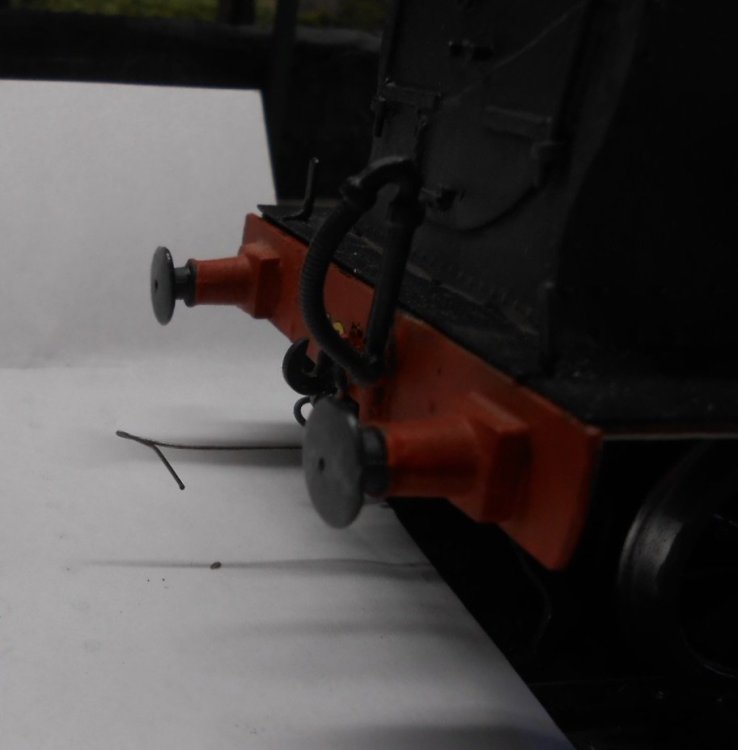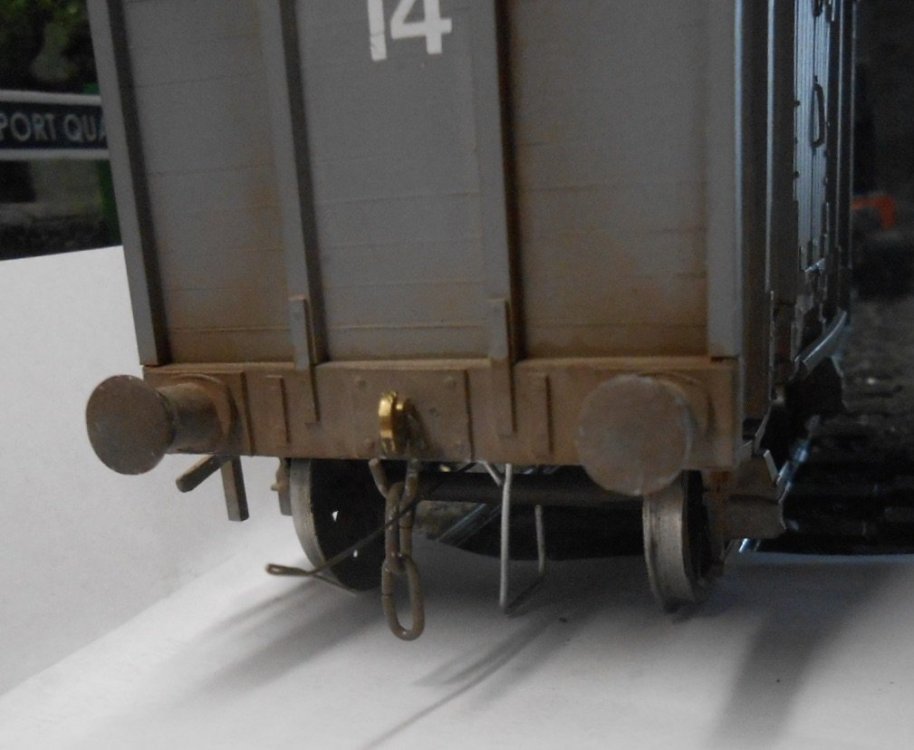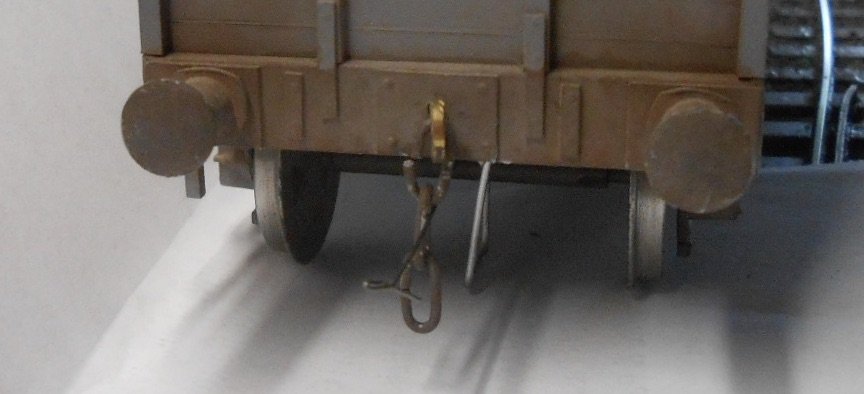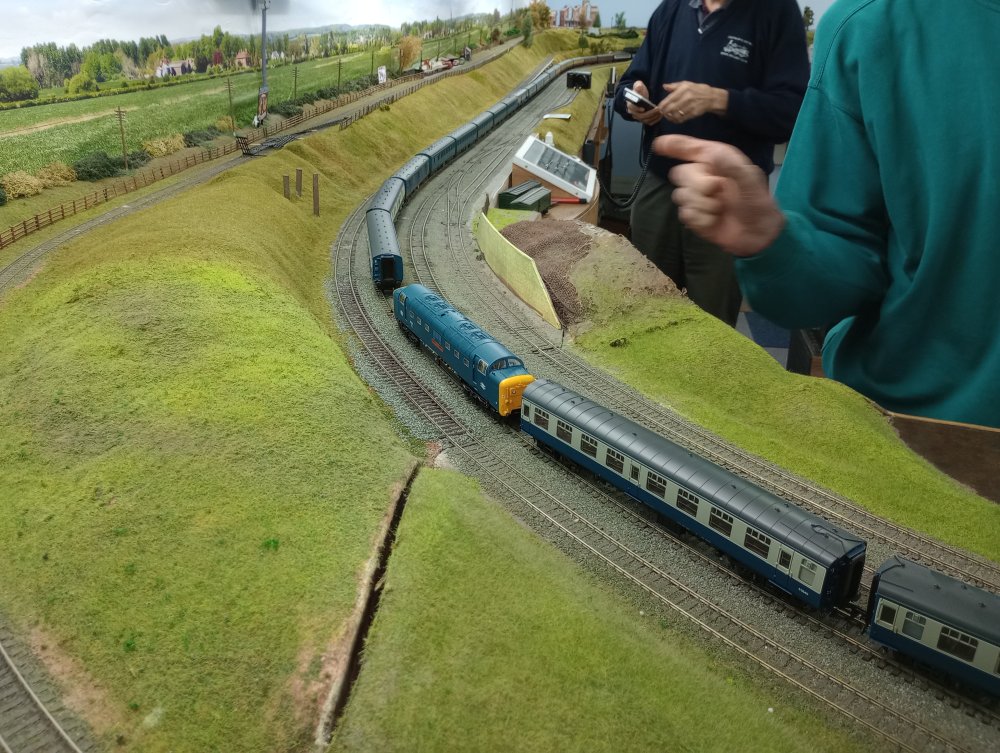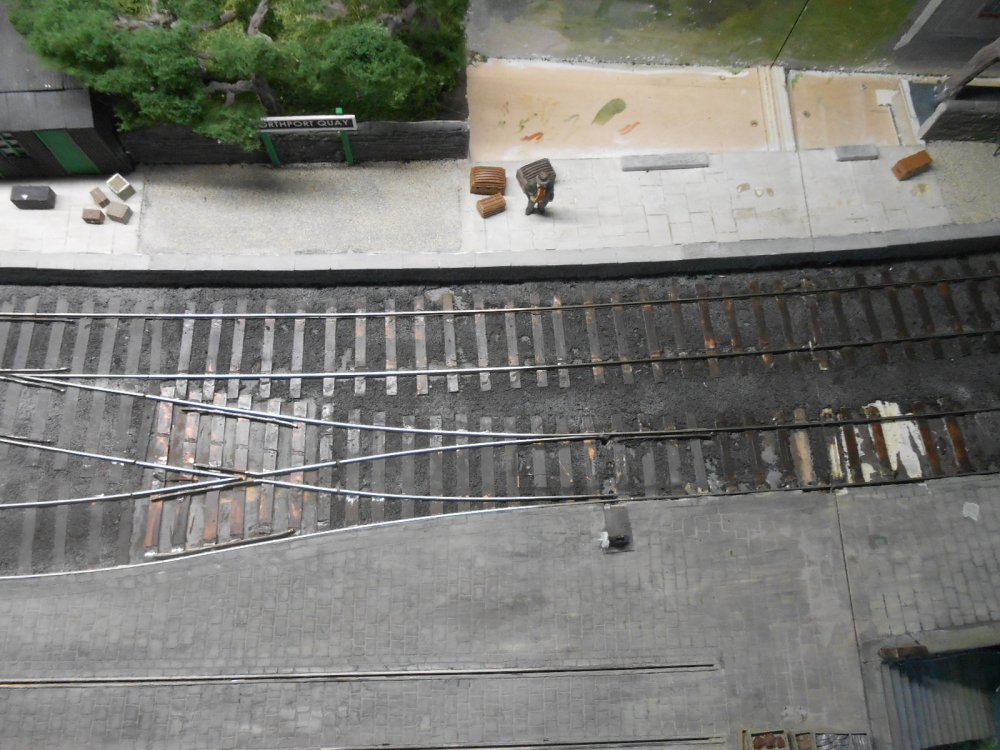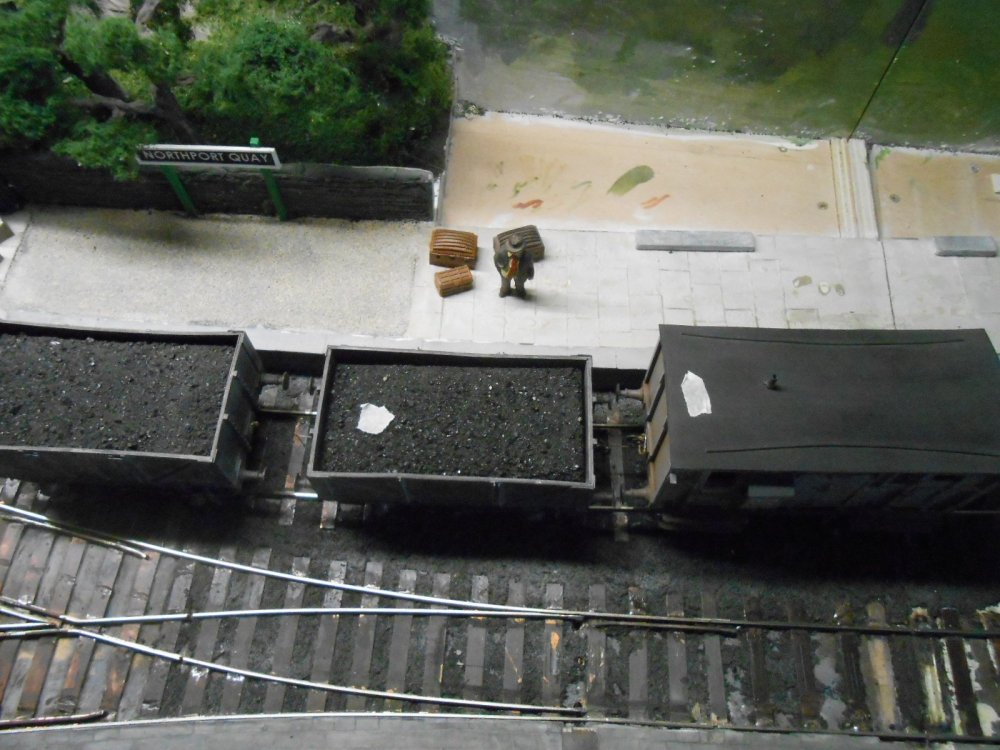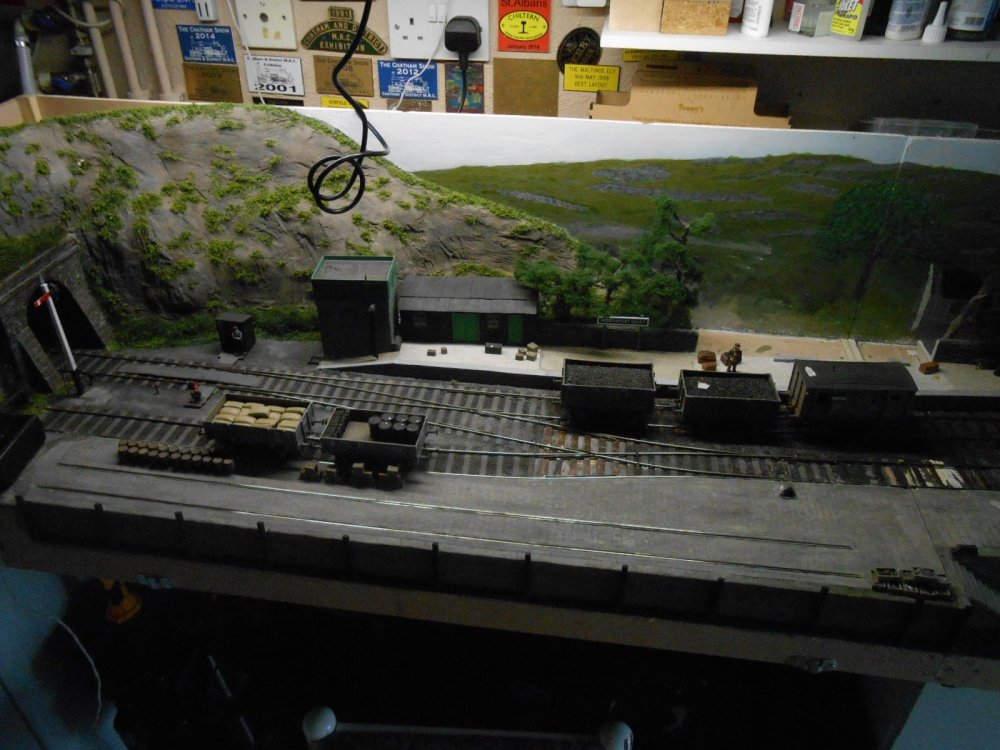
David Holman
Members-
Posts
4,359 -
Joined
-
Last visited
-
Days Won
117
Content Type
Profiles
Forums
Events
Gallery
Everything posted by David Holman
-
Have had the pleasure of operating Ballyconnell Road and it is every bit as good as it looks in the video. The quality of the running is exceptional, aided by correct signalling and reliable uncoupling. All the steam locos have working inside valve gear (yes, really) and there are even a couple of working road vehicles. All in all an absolute joy. Forgot about the new TT being 1:120 - as Mayner rightly says, it is just a further complication to attempting the Irish scene. At the end of the day, it is either a case of accepting compromises of gauge or going the extra mile. Nothing wrong with either of course - it is all about personal choice.
-
The correct gauge for 3mm/ft scale would be 15.75mm (3 x 5.25), so not far out at all. However, it also depends on how the scale is measured. The old TT ran on 12mm gauge track, so about as bad as 00. One foot is just over 300mm, so a scale of 1:100 is pretty realistic and nominally easy to work with. I think the Irish track gauge is quoted now as 1.6m, so that makes 00 track just half a mm too wide and certainly a lot better than 4mm scale. The fabulous Ballyconnel Road is 3mm finescale and not sure what gauge is used there, though am guessing 15.75 Indeed the sums do not always add up, it seems!
-
Amazing models. 3D printing is definitely going up in the world and the skills required to produce these are every bit as good as any scratchbuilding.
-
Wonderful information! Many thanks John. Never ceases to amaze me what is out there.
-
Excellent stuff - many thanks, as ever! The reason for the request is I'm grappling with a couple short mixed trains on Northport Quay. My 1900s period is a 6w brake 3rd with a semi and a brake van, though was wondering if the brake 3rd could go at the end, to make shunting easier. There again, if the semi was fitted, that solves the problem anyway. Trouble is, did any of the semis ever get vacuum brakes - or indeed any early vans when used for fish traffic? Which takes me back to the original question about livery. MGWR horse boxes were fitted and also painted in passenger brown livery. Would a fitted fish van have got the same treatment? A GSWR fitted fish van in their very dark passenger purple/black seems unlikely though. However, seems like I could get away with an unfitted van in front of the passenger train on a short branch like NPQ, while a 1950s SLNCR consist of a brake 3rd and a couple of fitted GNRI vans won't be a problem. Much easier on Fintonagh, where all Clogher stock was braked, while when I go down the Swilly/Donegal route the same applies - not that the Swilly bothered much with brakes from what I've read.
-
Lovely stuff. Have to keep reminding myself it is 4mm scale. As for 14ba nuts, bet the carpet monster loves them!
-
When using DAS to cover a building (to be scribed for brick or stone later), I always put a thin smear of pva on first, which helps it stay in place. As JB says though, any cracks can easily be covered with more DAS and painted over. It is also easily smoothed with a wet finger, spatula or some such.
-
Eternally grateful for the knowledge they wrote down and passed on to good folk like yourself, JB!
-
Many thanks, both of you. However, as a further question - in steam days, on mixed trains, presumably any unfitted stock had to be put behind the coaches, with a brake van bringing up the rear and if unfitted wagons were in front of the passenger coach, then customers were not (officially) allowed? Also, could a mixed train do without a brake van if all wagons were fitted and provided there was a guard's compartment somewhere?
-
This side of the water, fitted wagons (those with vacuum brakes, able to run in passenger trains and at higher speeds) were painted in bauxite, as opposed to grey for unfitted stock. Was there a similar system in Ireland, or did it very from one company to another? I believe the GNRI wagons were treated this way, but what about others? Am interested in all periods, but especially the early 1900s and the 1950s.
-
Indeed! Many similar experiences trying to use screw link couplings at exhibitions. Many an occasion where it was just as well the onlookers couldn't hear what I was thinking.
-
Gosh, life is complicated and that's why it's fun, as the saying goes! Hadn't thought about H0 on EM = 17.5 scale v 18.2 actual, though back to the age old problems of finding anything rtr that could be adapted. If I was starting again, 30 years younger, but knowing what I know now, then S would be very tempting and I love the fact that (in a purely imperial scale) the track gauge would be 63/64ths of an inch. And has been done of course.
-
I've somehow got the full set of MRJs, right back to edition 0, so must look back on 37 and 39! Joined the queue to see Hursley at that Westminster show, not realising at the time that quite a bit of the stock was Gordon Gravett's. Hursley was one of the great turning points in modelling, while Martyn's The Art of Weathering remains one of my most referred to books. Published nearly 30 years ago, while Hursley was very much before static grass machines became available. My favourite picture is the one looking inside the empty loco shed. Minimalist it may be, but about as close to perfection as you can get.
-
Thanks Ken, am sure you are well equipped to deal with AJs in 4mm scale, where there is a need for a bit more precision. A bit like signal mechanisms, most of the operational side is hidden - in this case under the vehicles' floors. In 4mm scale, hinges (using hypodermic tube) seem preferable to the basic spring wire in 7mm, while the fixing point, especially on a four wheel wagon is almost at the opposite end. At least loco couplings are simpler, with just the basic hook. Found that getting into a routine worked best, so I made up all the hooks at once and likewise the under wagon fixing points. This made setting up each wagon feel simpler and needing less time. I can now fit a wagon in under half an hour. Like you, have no intention of fitting AJs to every wagon and coach. Mine are set up in rakes of two or three with an AJ at each end and three/screw links in between. Also, I had the same problem with Dinghams as you have with S&W. AJs require care, but their advantages repay that. I put three electro magnets on Northport Quay, but have found I only need two to cover all the moves. I also like the way you can uncouple while moving so there is less importance in terms on trying find the exact place of the magnet. On Fintonagh, using Kadees and rare earth magnets, you have to spot a 3mm 'window' from up to 2m away... Perseverance very much the key!
-
A personal take on AJs Whisper it quietly, but I at last seem to be getting to grips with Alex Jackson couplings. Others more careful and precise than me would have mastered them by now, but it does feel like I'm getting there. The thing about AJs is that it is not just the couplings themselves, but the whole wheels and track relationships too as it seems everything needs to be in order for them to work. Am guessing that P4, Scaleseven or even S scale would work best with them as finer tolerances no doubt help with alignments. However, 7mm fine scale is a reasonable compromise, as long as you make sure of various key elements: Track must be well laid. Any imperfections, both horizontal and vertical can cause problems - so I guess I should be grateful for this, as it is making me fettle everything to the best standards I can. Curves need to be smooth too. On Northport Quay, all four points are 6' [1.8m] radius, but nevertheless, I've had to address a couple of kinks because they were stopping stock from coupling properly. As for the AJs themselves, the articles I've read seem to tell you about angles and ways of mounting, but not really why they are so important, so for what it is worth here's my take on matters; The hook has two key bends. Neither appear to need absolute accuracy, but the 'nose' at 120 degrees is important because when the dropper wire is pulled down by the uncoupler magnet, this bend is what causes both hooks to go into 'over ride' and mean that vehicles can be pushed to any given point without coupling up again. The downward bend of the hook is likewise crucial to this and I've found its length to be important too. Indeed, too long and the couplings will not pass each other to disengage. The couplings' alignment must be on the exact centreline of each vehicle and the height must likewise be consistent on every vehicle. The dropper wire must also be the right length - no more than a millimetre variation or the magnets will either not be able to attract the wire, or will foul the rails. Screw/three link couplings need to be kept out of the way so as not to impede the coupling wire moving up & down. All of this I've discovered through what seems endless testing. Fortunately many of the operational moves are quite simple: the train arrives and stops over the platform magnet. A slight reversal is enough to uncouple & then all the loco has to do is run round and couple up at the other end, ready for departure. Simple, but very satisfying to do 'hands free'. The shunting move for the left hand siding has been described in the Layout thread. The right hand siding is kept free so that wagons can be swapped with those in the pier fiddle yard. Fingers crossed, this move is now pretty successful too. A few more tweaks, but almost there, subject to keeping everything aligned of course - but that is why the stock boxes have been adapted to keep the couplings safe. Am now looking forward to getting back to the E class, especially as the motor gearbox has arrived.
-
Here's a photo. 65 coaches at an average of day 25cm each = 16.5 metres, including the loco. Full size, a train like this would be over 1.3km long and weigh around 2600 tons. Would a real Deltic manage this? Did read somewhere that a model pulled a breeze block (on a wagon), but no idea how this compares with the weight of last night's models. Either way, very impressive.
- 2 replies
-
- 10
-

-

-
Beautifully crafted!
-
At the Chatham Club this evening we had a preplanned haulage test of one of the 00 Deltics. The main layout offers a large oval with 4' radius curves, so more and more coaches were assembled until an actual tailchaser was achieved with no less than 65 bogies. The Deltic was completely unphased by this massive load and had we the room, nobody would have been surprised if 100 bogies were pulled. Will post a picture later.
-
Looks SO familiar! What is it about even the simplest jobs that seem to need half the contents of the tool box? Love that jig you are using to assemble the cab. Home made or commercial? Either way, time and money well spent.
-
Very much admire the ambition, but many a project has foundered because it all took too long. Probably the biggest question to consider is - are you mainly a builder, or an operator? Galteemore and I were talking about this at a show on Saturday. We will happily play trains at exhibitions, but at home, it is all about making stuff. If operation is your thing, a big project like this will take a long time before you ever get to see things moving and even longer before it looks like you want. My advice is always to start small and make something you can finish in a reasonable time scale. When I was working full time, I could generally complete a single baseboard (bare wood to track laid, wired and scenics) in a year. Therefore, starting from scratch and using commercial buildings, stock and so on, a small layout could easily take 12 to 18 months. If you are keen on a big project, aim to break it down into smaller pieces. Find a section of Harcourt Street that would make an interesting diorama and build that. It can then be incorporated into the big project but if interests wanes you haven't wasted any time while still gaining valuable experience. Sermon over! As to measuring stuff, large scale maps can give a good idea of station site sizes, while your own stock will tell you what space you might need too. For example, using feet and inches, a coach or main line loco will be 60ft = 10 inches, so loco and five will be 5ft long. Therefore you will need up to 20ft/6m, just to model a terminus to fiddle yard, because a train needs to run 3x it's own length to feel right. As for other dimensions, study photos (plenty on Google) and use people to get a rough idea of height, or indeed railway stock. A coach will be about 4m tall. Also, standard doorways are usually about 2m, though grander entrances will be higher. Overall though, this hobby is more about the journey than the destination. We finish a project and immediately want to start a new one! So, take your time, study what folk are doing here, if you can, join a local club and most of all enjoy the ride. Being creative is a great antidote to the stresses and strains of the modern world, even if it does get frustrating at times.
- 58 replies
-
- 11
-

-

-

-

-
- 1950s to 1990s irish railways
- harcourt street line
- (and 3 more)
-
A bit bigger than your stuff, Angus, though we did have the delightful 2mmFS 'Freshwater' layout [IOW] next door. Always impressed by how well these tiny models run.
-
Just one picture, which [sort of] paints a thousand words - most of them rude... A lot of effort [and expletives] have been expended on this short bit of track in the last week. The upper line is [fingers crossed] now ok and the new sleepers & rail are being repainted. However, the Y turnout has been a real pain in the primary orifice, merrily derailing every wagon that went over it. I say every, though there are only ten in total for both periods [two wagons and a brake for each train]... A combination of all the check rails at the Vee [frog] end and adjusting the back to backs on the wheels got that sorted, but the point blades were more stubborn, requiring resetting the tie bar below the baseboard. Even then the wheel flanges were catching the open blade, riding up and derailing. Tortoise point motors don't allow a bigger gap, so had to resort to fitting a check rail just in front of the upper blade, which seems to have sorted the problem. Have since gone on to test the two short freights that shunt the left hand siding. Two wagons and a brake are pulled into the loop & then pushed back into the siding to pick up two more wagons already there. All five are then pulled back into the loop, then reversed again so that the brake and latter two wagons are parked beyond the Y. The loco can then push the two incoming wagons into the siding, collect the out going ones, then run round and depart. All this is done via single electro-magnet [operated by a push to make switch on the control panel], currently marked by a small piece of masking tape on the right of the picture. In principle, this works well. In practice, the Alex Jackson couplings need careful setting up. Mainly, this involves making sure the hooks are at the right height and dead centre. However, the dropper wire, mostly hidden behind the wheels, also needs to be just the right height to be pulled down by the magnet. A millimetre too high and it doesn't work [even with 15 volts instead of 12], a millimetre too low and magnet and dropper embrace, potentially causing a derailment. However, slowly getting there, though the two coal wagons still need attention, as does one end of the brake, note the masking tape again. Knowing when to stop and leave it for another day is very much the mantra in these things! Really nice to take Fintonagh out and have a day with Galteemore and his son yesterday and get away from this for a while.
- 242 replies
-
- 11
-

-
It was great to have GM & his son's company on Saturday and even better to have two accomplished operators. Think I can finally remember how to pronounce Leitrim! Many thanks for a lovely day and some fine pictures. The loco inside the shed is a first, not least because it only just fits...
-
N Scale Ballywillan, Co Longford.
David Holman replied to Kevin Sweeney's topic in Irish Model Layouts
Now that is a stunner. Waiting for an excuse to have a model railway built around it, methinks. Cavan station is a little beauty too. -
Doing that today, as it happens - rail cleaning, that is... Fintonagh has a day out at the De Havilland club's show in Welwyn tomorrow. Galteemore is on duty with me too, so no excuses for not pronouncing names properly!
.png.c363cdf5c3fb7955cd92a55eb6dbbae0.png)


